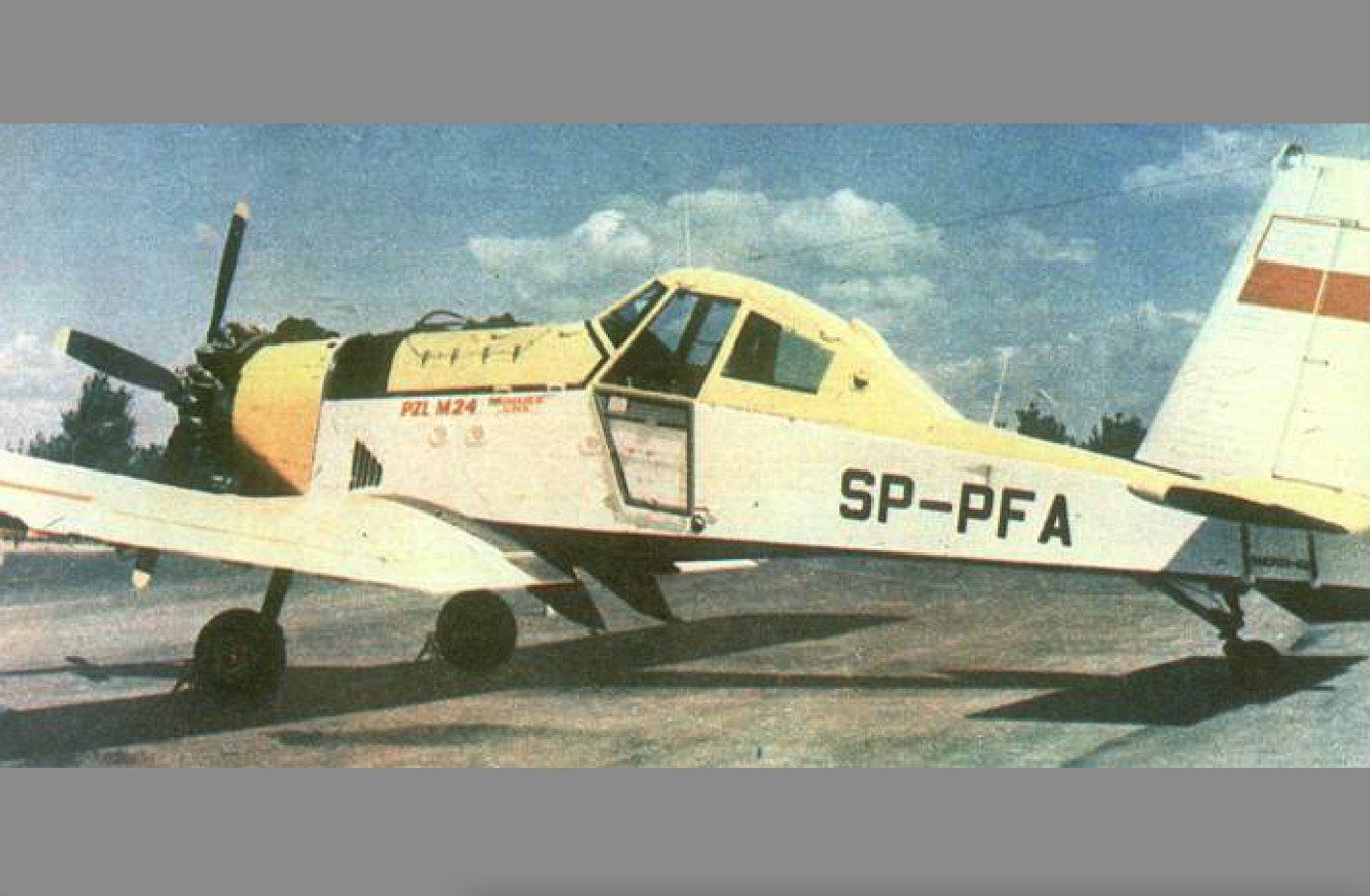Kraków 2013-10-01
277b Tally 20.07.1987 year.
PZL WSK Mielec PZL M-24 Dromader Super.
The Polish PZL M-24 Dromader Super aircraft is the world’s largest agricultural and firefighting aircraft. The aircraft is a development of the PZL M-18 Dromader design.
The history of the PZL M-24 design.
The PZL M-24 is another agricultural and firefighting aircraft from the "Dromader" family of machines. The plane was renamed "Dromader Super". The machine is the largest agricultural airplane in the world. Its designer was the team of engineer Józef Olesiak.
Work on the aircraft began in 1981. The aircraft design was approved in June 1981 and the development of technical documentation began. Documentation was completed in mid-1982. The aircraft was developed in accordance with the provisions of FAR 23 with amendment No. 27. The useful load of the machine is 2 500 kg. Many elements for the M-24 were taken from the smaller M-18. This mainly applies to the elements of the power unit, cabin equipment. A new enlarged chemical tank was developed for the new aircraft. Its capacity is 2,700 liters. The tank itself weighs about 150 kg. In the M-24, the lifting capacity has been increased by 500 kg (1,600 – 2,000 kg). The chemical tank is equipped with a large top hatch, allowing the aircraft to carry goods, such as spare parts or operational equipment. Specialist equipment received a more efficient chemical pump with a capacity of up to 40 liters / sec (144 m3 / h). The pump is electro-hydraulic controlled.
The crew cabin was enlarged and equipped with a second tandem seat. Thanks to this, the aircraft can be adapted to the training of pilots at a low cost. Usually, the second seat is occupied by a mechanic – a chemical loading operator.
The landing gear has been redesigned to accommodate higher loads. Two-chamber shock absorbers were used. The landing gear did not lose its ability to operate off the dirt runways.
The wings were significantly enlarged. They have larger fuel tanks (1,400 liters).
The light metals plant in Kęty has developed new profiles. The Military University of Technology joined the program by performing a large number of tests. Modelers from Krosno made a remotely controlled model of an airplane on which, among other things, corkscrew tests were carried out. The aircraft model was piloted by engineer Waldemar Peszke from Krosno.
As the program was not a priority, its implementation took place as there was no production capacity. The prototype for static tests was handed over on January 20, 1987. The second prototype was ready in April 1987 and the third prototype in October 1987. When the construction of the first prototype of the PZL M-24 began, its smaller counterpart, the PZL M-18, was already built in 400 copies.
The plane was flown by test pilot engineer Andrzej Pamuła on July 20, 1987. The aircraft was powered by the same engine as the PZL M-18, which was treated as a replacement; ASz-62 IR with a capacity of 1 x 736 kW.
The target engine was to be the PZL-Kalisz K-9 engine with a power of 1 x 883 kW (1 x 1,200 HP). The plane with this engine made its first flight in 1988. The PZL-Kalisz K-9 engine was also installed on the PZL M-18 B aircraft and the flight was performed in 1993.
The third prototype was equipped with a Pratt & Whitney PT6A-45AG turboprop engine.
Four flight prototypes were built and received registrations; SP-PFA (1AKP 01-02), SP-PFB (1AKP 01-03), SP-PFC (1AKP 01-04), SP-PFD (1AKP 01-05). An incomplete prototype for endurance tests was also built. However, the plane did not enter mass production.
Written by Karol Placha Hetman

